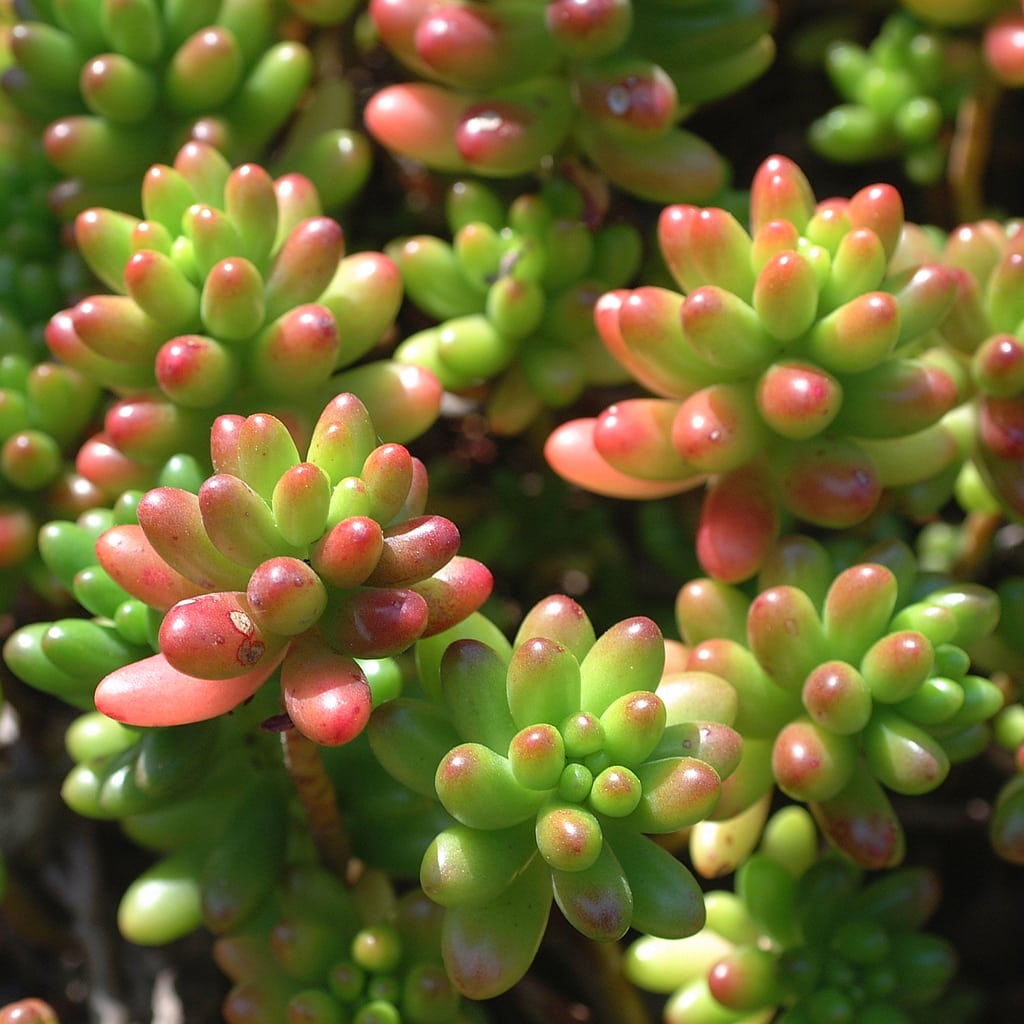[ad_1]
Succulent farmers enjoy the sedum jelly bean plant (Sedum rubrotinctum). Vivid plump, little red-tipped fallen leaves that resemble jelly beans make it a favored. Due to the fact that the fallen leaves in some cases transform bronze in summer season, it is in some cases called pork-n-beans. Others describe it as Christmas joy. Whatever you call it, jelly bean sedums create an uncommon plant in a plan or in a pot on its own.
About Jelly Bean Sedums
Jelly bean plant realities show this plant is a cross of Sedum pachyphyllumas well as Sedum stahlii, As such, it’s one more prospect for overlook as well as does ideal without way too much interest.
Six- to eight-inch (15-20centimeters.) When leaves evaluate it down, stems expand upwards as well as lean. Tiny yellow blossoms show up perfectly in winter months to springtime throughout the very early years of development.
Planting as well as Caring for Jelly Bean Plants
Grow the sedum jelly bean plant in containers or plant it in the ground. Those in locations with cool winters months may expand it as a yearly or collect as well as transplant right into pots in fall. Sedum is easy to plant, most of the times hiding a stem is all you should obtain it began. Prevent sprinkling for a week or 2 after growing.
Sedum jelly bean plant requires a bright place to preserve vivid fallen leaves. Sedum selections frequently expand in locations of the landscape where absolutely nothing else makes it through due to warm, completely dry problems. You could likewise utilize the jellybean plant in partly shaded locations for a pop of shade, simply plant someplace where a couple of hrs of the sunlight could get to the plant. In the best environments, this delicious requires some color in summer season. When not sufficient light reaches them, Jelly bean sedums transform eco-friendly all over.
Succulent jelly bean treatment includes restricted watering. Added water is possibly not required if rainfall is offered to the plant. When feasible, permit an extensive completely dry duration in between waterings. Expand this sampling in fast-draining dirt blends, such as pumice, perlite, or sand blended with peat as well as a minimal quantity of potting dirt.
Pests are uncommon on jelly bean plant. Watch for mealybugs as well as scale, as well as if you see them, eliminate with an alcohol-soaked Q-tip. Fungus gnats are normally an indication that the dirt is as well wet, so brighten up on watering.
[ad_2]

